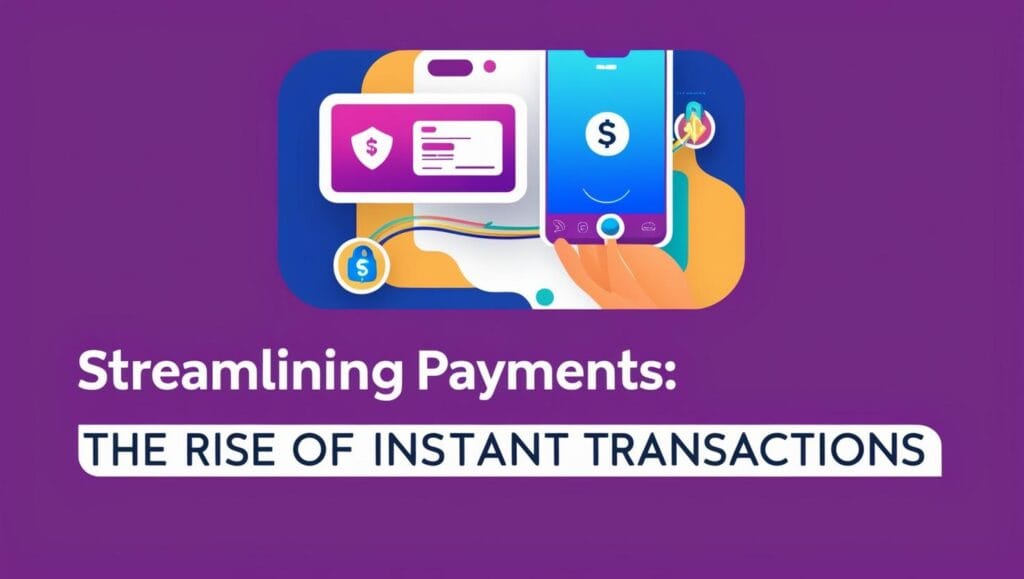Introduction
In a world where you can stream a movie, order dinner, or hail a ride in seconds, waiting days for a payment to clear feels like using a fax machine in the age of WhatsApp. Enter Instant Payments Systems (IPS)—the game-changer reshaping how money moves. Whether splitting rent with a roommate or closing a business deal, instant payments are no longer a luxury—they’re a necessity. Let’s explore why they matter, how they work, and what makes them tick.
Table of Contents

Why Do We Need Instant Payments?
The digital economy thrives on speed. Here’s why instant payments are no longer optional:
- Business Survival
Cash flow is the lifeblood of businesses. Waiting 3-5 days for funds can delay payroll, inventory restocking, or growth opportunities. Instant payments keep operations agile. - Consumer Expectations
People expect to send money as easily as a text. Need to pay a freelancer or cover an emergency bill? Instant is the new norm. - 24/7 Global Economy
Traditional banking hours are obsolete. Cross-border commerce, gig workers, and e-commerce platforms demand round-the-clock transactions. - Financial Inclusion
Real-time payments empower unbanked populations by enabling instant access to wages or government aid via mobile wallets.
What Is an Instant Payments System?
An Instant Payments System (IPS) is a digital infrastructure that processes transactions in real time, 24/7, 365 days a year. Unlike legacy systems (like ACH or cheques, local clearings etc.), IPS settles funds in seconds—no batches, no delays.
Key Features:
- Speed: Transactions complete in under 10 seconds.
- Always On: No weekends, holidays, or downtime.
- Irrevocable: Once sent, funds can’t be recalled (unlike checks).
- Transparency: Senders/receivers get instant confirmations.
Examples include India’s UPI, the EU’s SEPA Instant, UAE NPSS and the U.S. FedNow.
How Clearing and Settlement Work in Instant Payments
To grasp IPS, think of it as a digital highway replacing winding backroads. Here’s the breakdown:
- Traditional Systems (Slow Lane)
- Clearing: Banks batch transactions hourly/daily.
- Settlement: Funds move between banks after verification (often overnight).
- Instant Payments (Fast Lane)
- Clearing: Real-time checks for fraud, account validity, and funds.
- Settlement: Money moves instantly between accounts via central infrastructure (e.g., a central bank).
Behind the Scenes:
- When you hit “send,” the IPS pings both banks.
- The sender’s bank verifies funds and locks them.
- The receiver’s bank confirms account details.
- Funds are transferred and “settled” immediately through a central payment rail.
No middlemen, no waiting.
The Messages Powering Instant Payments
Instant payments rely on ISO 20022, a universal messaging standard that ensures seamless communication between banks. Here’s the chatter:
1.Payment Initiation (PAIN.001)
- The sender’s request: “Transfer $X from Account A to Account B.”
- Includes details like amount, recipient, and purpose.
2. Outgoing response (PACS.008)
- Sender bank responds: “Find all the details of transaction”
3. Confirmation (PACS.002)
- Receiver’s bank responds: “Funds received, all checks passed or failed. ACK or NACK”
4. Settlement Notification (CAMT.053)
- Both parties get real-time updates: “Transaction complete at 3:15:30 PM.”
5. Recall/Reversal (PACR.007)
- Rare but critical: “Reverse this transaction due to error/fraud.”
These messages ensure transparency, security, and compliance across borders.
Benefits of Instant Payments
- Speed: Pay employees, suppliers, or friends in seconds.
- Cost Savings: Eliminate wire fees and hidden charges.
- Security: Built-in fraud checks and encryption.
- Global Reach: Send money across borders as easily as locally.
The Future of Payments Is Instant
As tech evolves, so will IPS. Imagine AI predicting cash flow gaps or blockchain enabling cross-border micropayments. Governments and businesses worldwide are already adopting IPS—India processes 10 billion+ UPI transactions monthly!
Ready to Embrace Instant?
Whether you’re a small business or a casual user, instant payments aren’t just convenient—they’re reshaping finance. Next time you split a bill or invoice a client, remember: the future of money is now.
Let’s get into “4 Key Forces Fueling the Real-Time Money Revolution” in next article